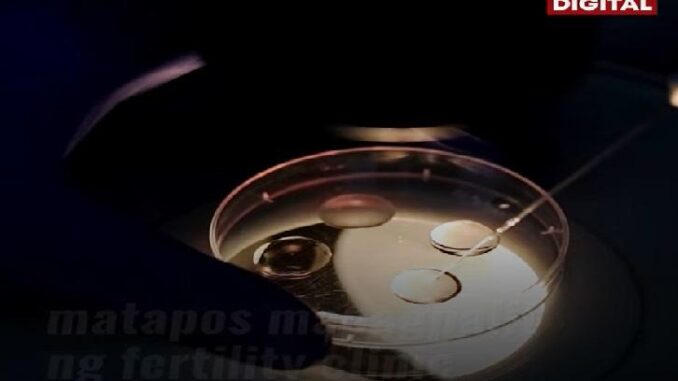
As women age, the quality of their eggs decreases and they become less useful for in vitro fertilization. But it may someday be possible to “rejuvenate” older eggs to improve the likelihood of successful pregnancies and healthy babies, a study in mice suggests.
In the ovaries, immature eggs are housed in fluid-filled sacs called follicles. When an egg matures, the follicle ruptures and releases the egg during ovulation.
It seems, Haiyang Wang and colleagues at the National University of Singapore reported in Nature Aging, that moving “aged” eggs into “younger” follicles can partially restore their reproductive function, and in turn, generate eggs that are of better quality for in vitro fertilization.
In experiments in mice, the researchers extracted healthy follicles from young animals and cultured them in test tubes. Then they extracted older eggs from their original follicles and transplanted them into the younger follicles, whose own eggs had been removed.
The results showed that “the quality and developmental competence of the aged (egg) can be substantially, though not fully, restored through ‘nurturing’ in a young follicular environment,” the researchers said in a statement.
There were improvements seen in the aged eggs’ metabolism, gene expression and energy production. There was also evidence that the young follicular environment could support processes that reduced the number of abnormal chromosomes.
In the mice, “All these improvements enhance the success of embryonic development after in vitro fertilization, leading to a live-birth rate around three times higher than that achieved with aged oocytes not exposed to the young follicular environment,” the researchers said.
Of course, more research is needed to know whether these findings can be extended to humans.
Women starting at around age 42 to 45 are typically advised not to proceed with IVF with their own eggs because older eggs have a higher chance of abnormalities.
Gene variant protects against jaundice in some newborns
Some babies are born with a gene variant that almost completely protects them against jaundice, researchers have discovered.
Many babies have jaundice in their first few days of life, with a yellowish tinge to their skin and the whites of their eyes. Usually, it goes away on its own. Severe cases, however, can lead to brain damage and death. The yellow tint is caused by bilirubin, an orange-yellow pigment formed in the liver as it breaks down excess red blood cells.
The researchers were surprised to find that the newly identified gene variant present in certain people affects the babies’ processing of bilirubin differently than in adults, according to a study in Nature Communications.
They made their discovery by analyzing millions of genes in blood samples from almost 30,000 newborn babies in Europe, including about 2,000 with jaundice, and their parents.
The variant they found – known to be present in around 12% of babies born in Europe and the United States – controls an enzyme that converts bilirubin into a water-soluble form, allowing the body to get rid of it more easily.
“We are surprised that we only see this effect in the intestines of the babies, but not in the liver, as it is the liver that is responsible for the metabolism of bilirubin in adults,” study leader Dr. Bo Jacobsson of the University of Gothenburg in Sweden said in a statement.
The finding eventually may lead to development of a way to prevent severe newborn jaundice, the researchers said.
Exelixis drug helpful in advanced form of pancreas cancer
A small percentage of pancreatic cancer cases – including the one that affected the late Apple founder Steve Jobs – are so-called neuroendocrine tumors. Cabometyx, from Exelixis EXEL.O, can significantly extend the time until the disease worsens in patients with advanced cases of these tumors, researchers reported at the European Society of Medical Oncology in Barcelona.
Among 95 patients with advanced pancreatic neuroendocrine tumors in a randomized trial – all of whom had failed other treatments – the median progression-free survival with Cabometyx was 13.8 months, compared with 4.4 months with placebo.
Progression-free survival was also improved with Cabometyx in 203 patients with advanced neuroendocrine tumors at other sites in the body, although not to as great an extent. Median progression-free survival in those patients was 8.4 months in the Cabometyx group and 3.9 months with placebo.
“The results support the use of (Cabometyx) as a new treatment option for patients with advanced extrapancreatic neuroendocrine tumors or pancreatic neuroendocrine tumors whose disease has progressed after at least one other line of therapy … or in whom unacceptable side effects have developed after such therapy,” Dr. Jennifer Chan of the Dana-Farber Cancer Institute in Boston and colleagues wrote in the New England Journal of Medicine. —Reuters




Be the first to comment